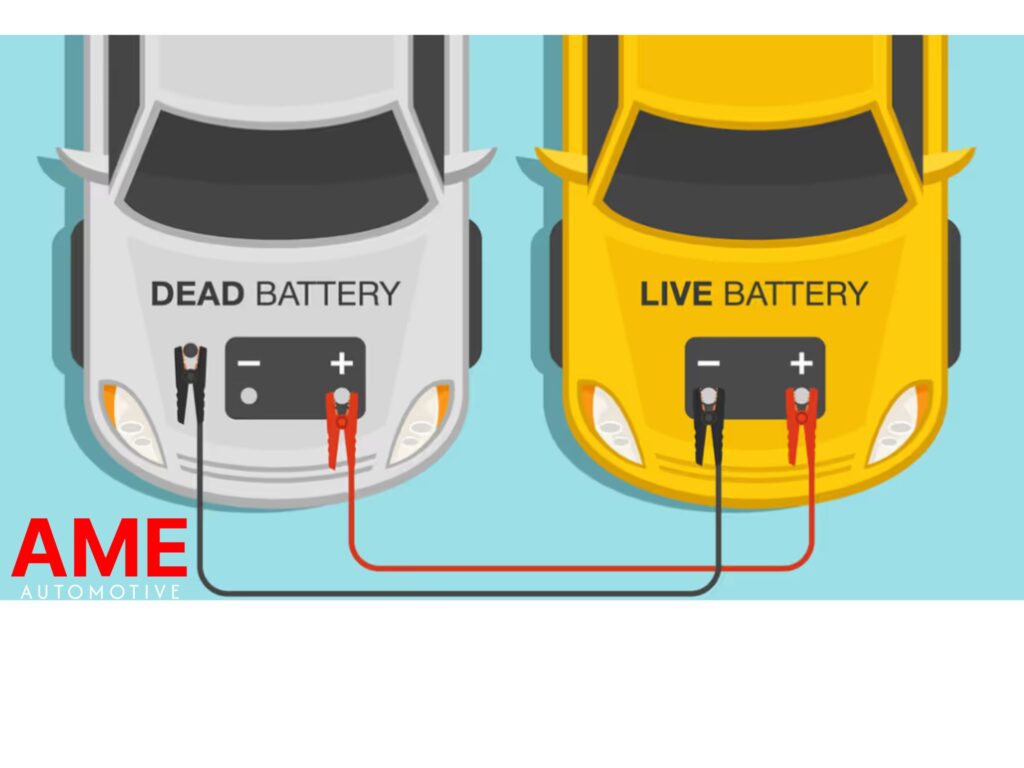Knowing how to jump start a car is an essential skill for any driver. A dead battery can happen to anyone, anytime, and understanding the proper procedure can save you time, money, and a whole lot of frustration. This guide will equip you with the knowledge you need to jump start your car safely and effectively.
Understanding Why Your Car Needs a Jump Start

Before we dive into the how-to, let’s briefly discuss why car batteries die. Common culprits include leaving lights on, extreme temperatures, old age, and faulty charging systems. Identifying the underlying cause can help prevent future battery issues.
Gathering Your Jump Start Supplies
You’ll need a few essential items to jump start a car:
- Jumper Cables: A good set of jumper cables is a must-have for any car emergency kit. Make sure they’re heavy-gauge and long enough to reach between the two vehicles comfortably.
- Another Vehicle with a Working Battery: This is where a friendly neighbor or a roadside assistance service comes in handy. Make sure their vehicle is running to provide a sufficient power source.
- Safety Gear (Optional but Recommended): Safety glasses and gloves can protect you from potential hazards like battery acid and sparks.
How to Jump Start a Car: A Step-by-Step Guide
Follow these steps carefully to jump start your car safely and effectively:
- Park the Vehicles: Position the working vehicle close to the stalled car so the jumper cables can reach both batteries. Ensure the cars are not touching.
- Turn Off Both Vehicles: Make sure both cars are completely turned off, including lights, radio, and accessories.
- Locate the Batteries: Identify the positive (+) and negative (-) terminals on both batteries. They are usually marked with red (+) and black (-) symbols.
- Connect the Red (Positive) Cable: Attach one end of the red cable to the positive (+) terminal of the dead battery. Then, connect the other end of the red cable to the positive (+) terminal of the working battery.
- Connect the Black (Negative) Cable: Clamp one end of the black cable to the negative (-) terminal of the working battery. Attach the other end of the black cable to a clean, unpainted metal surface on the stalled car’s engine block, away from the battery. This acts as a ground.
- Start the Working Vehicle: Let the working vehicle run for a few minutes to charge the dead battery.
- Try Starting the Stalled Vehicle: Attempt to start the stalled car. If it doesn’t start immediately, let the working vehicle run for a few more minutes and try again.
- Disconnect the Cables: Once the stalled car starts, carefully disconnect the cables in the reverse order of connection: black cable from the ground, black cable from the working battery, red cable from the working battery, red cable from the started car’s battery.
What if the Car Still Won’t Start?
If your car still won’t start after attempting a jump, the problem might be more serious than a dead battery. It’s time to call a mechanic or a towing service.
Preventing Future Jump Start Situations
Regular car maintenance can help prevent dead batteries. Here are a few tips:
- Regular Battery Testing: Get your battery tested periodically to ensure it’s in good working condition.
- Clean Battery Terminals: Corrosion can hinder battery performance. Clean the terminals with a wire brush and baking soda solution.
- Limit Short Trips: Short trips don’t give the battery enough time to recharge fully. Try to combine errands into longer drives.
“A good set of jumper cables and a little know-how can save you a lot of hassle down the road. It’s like having a spare tire – you hope you never need it, but you’re glad you have it when you do.” – Mark Stevenson, Certified Auto Mechanic
How to Jump Start a Car with a Portable Jump Starter
Portable jump starters are a convenient alternative to using another vehicle. These compact devices are powerful enough to jump start most cars. Simply follow the manufacturer’s instructions for safe and effective use.
“Portable jump starters are a great investment for peace of mind, especially if you frequently drive in remote areas.” – Sarah Miller, Automotive Engineer
Conclusion
Knowing how to jump start a car is a crucial skill that can empower you in emergency situations. By following these simple steps, you can safely and effectively revive your dead battery and get back on the road. Remember to keep a good set of jumper cables in your car and to perform regular maintenance to prevent future battery issues. Now you know how to jump start a car like a pro!
FAQs
- Can I jump start a car in the rain? Yes, but exercise extra caution. Make sure you don’t touch any wet metal parts.
- How long does a jump start last? A jump start provides enough power to start the engine. The car’s alternator then takes over charging the battery.
- What if the cables spark when I connect them? This can happen if the cables are connected incorrectly. Double-check the connections and ensure the vehicles are turned off.
- Can I use any type of jumper cables? Use heavy-gauge cables designed for jump starting cars. Avoid using thin or damaged cables.
- How often should I replace my car battery? Most car batteries last between 3 and 5 years. Get yours tested regularly to determine its health.
- Can I jump start a car with a completely dead battery? In some cases, a completely discharged battery might not accept a jump. You may need to charge the battery directly.
- What should I do if my car won’t start after a jump start? The problem might be more serious than a dead battery. Consult a mechanic or a towing service.





